Kuku Sabzi is a herb frittata and an absolute must during Nowruz - Persian New Year. It's delicious and loaded with fresh herbs, here I share my family recipe so you can try it too. Serve alongside our special rice, sabzi polo for the true experience 😊
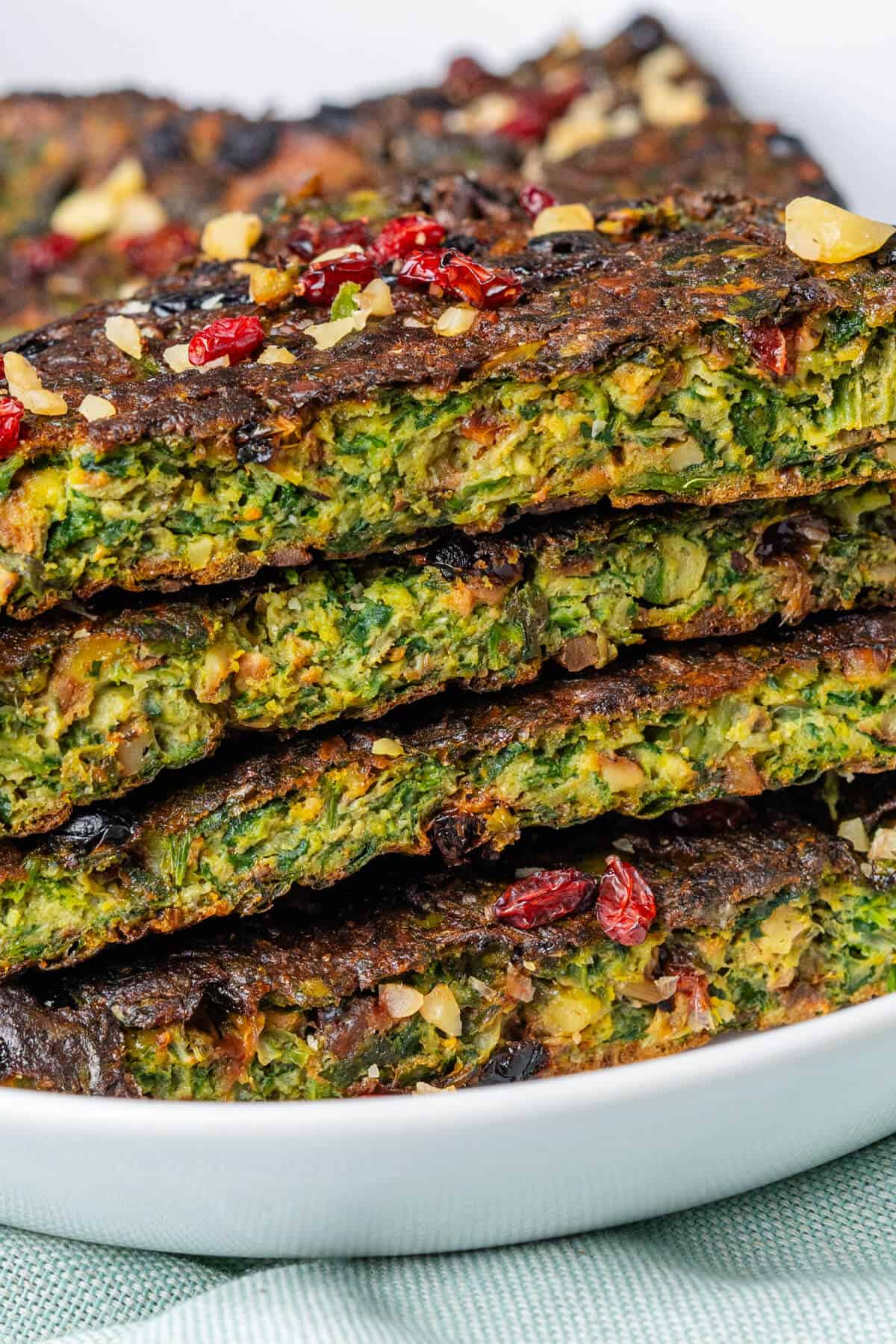
If there's a dish I know will be on the family table over Nowruz - Persian New Year, it's Kuku Sabzi! It's a staple during this special time, alongside sabzi polo which is a herb rice. The word sabzi, which is in the name of both these dishes, translates to “herbs” in Farsi, and they're the core theme of Nowruz. The green herbs resemble the start of spring, life, rebirth and fresh beginnings. Here I share our family recipe passed down from my Grandma that I hope you all love too 😊
Kuku sabzi, also known as kookoo sabzi, is a herb frittata with a huge emphasis on fresh herbs. Unlike a regular frittata, its not very eggy and instead has a vibrant green color. The outside is slightly crisp and quite dark which may look burnt, but this is how it's supposed to be...don't worry 😉. If you've achieved this color, you've made it right! Another very popular dish we eat during this time is a noodle soup ash e reshteh, which is also full of fresh herbs.
Anytime my mama or grandma would make kuku sabzi, you can smell the aroma miles away. Whilst its cooking, your house will smell amazing and the special scent comes from the combination of herbs that lingers all day. It consists a mix of parsley, cilantro (coriander), dill, spinach and green scallions or chives which makes it healthy and nutritious. Along with a common dried herb used in Persian cuisine fenugreek known as 'shambalileh' which adds the signature flavor in ghormeh sabzi.
My favorite part of kookoo sabzi are the chopped walnuts and little barberries which are pops of sweet and sour goodness....yum! You can enjoy it standalone or wrapped in one of our Persian breads such as sangak or barbari bread.
Table of Contents
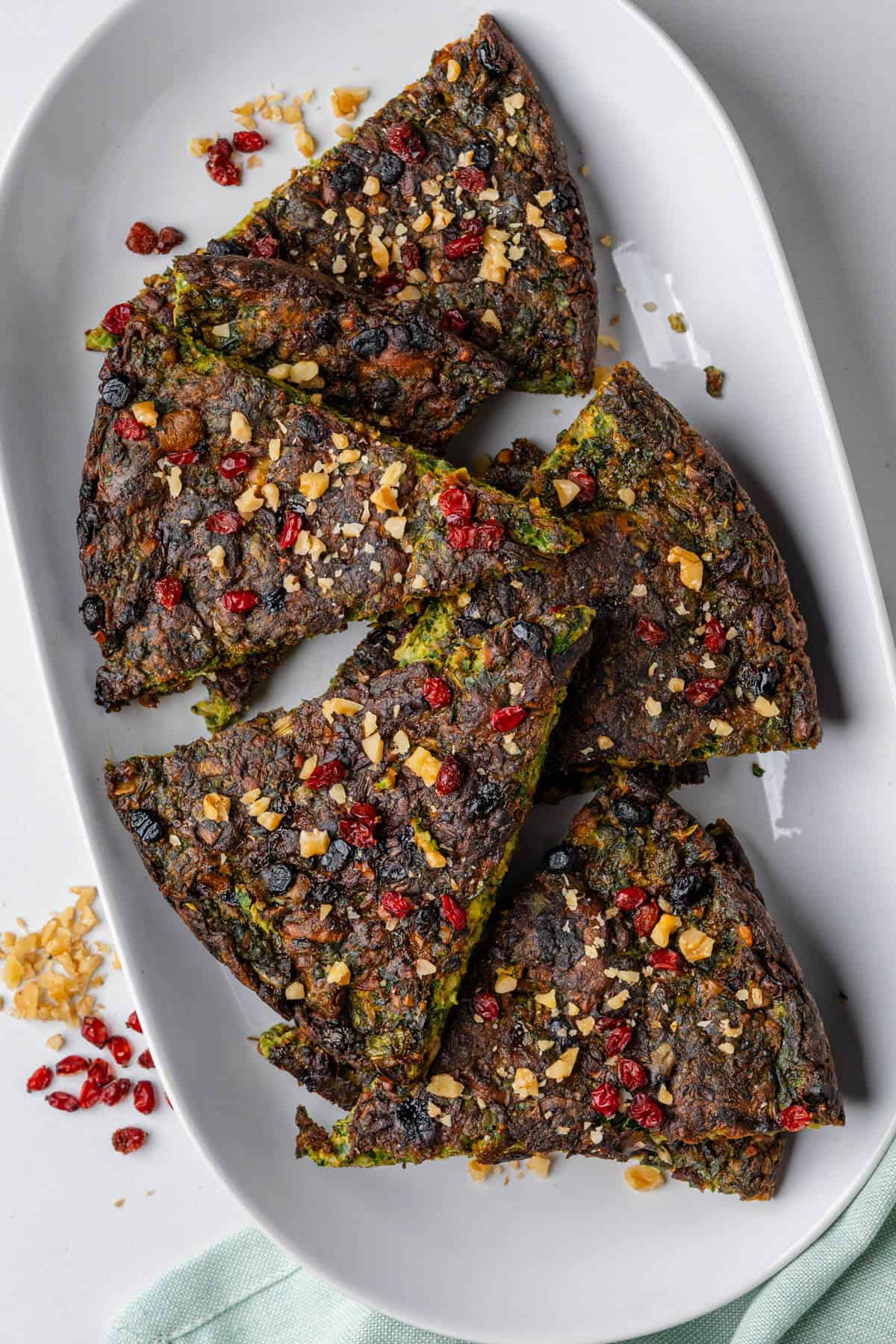
Persian New Year (Nowruz)
Kuku Sabzi isn't just a frittata, it holds a special place in Persian and Iranian culture, especially during the festivities of Nowruz also known as Norooz which is the Persian New Year. Nowruz is celebrated on the spring equinox (usually around March 20th), and is a time for hope, fresh starts, family, loved ones, and sharing yummy food together. Its also celebrated by many other cultures including Kurdish, Afghanistan, Pakistan, parts of Turkey and several others.
The word sabzi which is in the name, translates to green herbs and they are the core ingredient and theme. The foods we eat during this time have beautiful symbolic meanings in the spirit of Nowruz including this kuku sabzi, ash reshteh which is a noodle soup along with sabzi polo - herb rice. The vibrant green herbs used in these dishes represent new fresh beginnings and the start of spring.
Kuku sabzi is always served on Persian New Year with sabzi polo bah mahi (herb rice with fish). We traditionally eat ash reshteh on Chaharshanbe Soori which is a pre-Nowruz festival on the eve of the last Wednesday of the solar year. It traditionally involves jumping over bonfires which symbolizes cleansing away sickness, any problems, or misfortune from the previous year, for a prosperous new year.
We also eat ash on the last of the Nowruz festivities called Sizdeh Bedar. Its on the 13th day after the new year and literally translates to '13 the door'. It's a day to get rid of any bad fortune of the previous year, be outdoor with family and loved ones.
What makes this recipe special
- Authentic Persian: Take your tastebuds on a trip with my traditional family recipe
- Nutritious: Loaded with greens from the fresh herbs, spinach and eggs
- Easy Steps: Simple steps that anyone can follow
- Perfect For Any Occasion: Whether it’s Persian new year, 'Nowruz' or a casual family meal
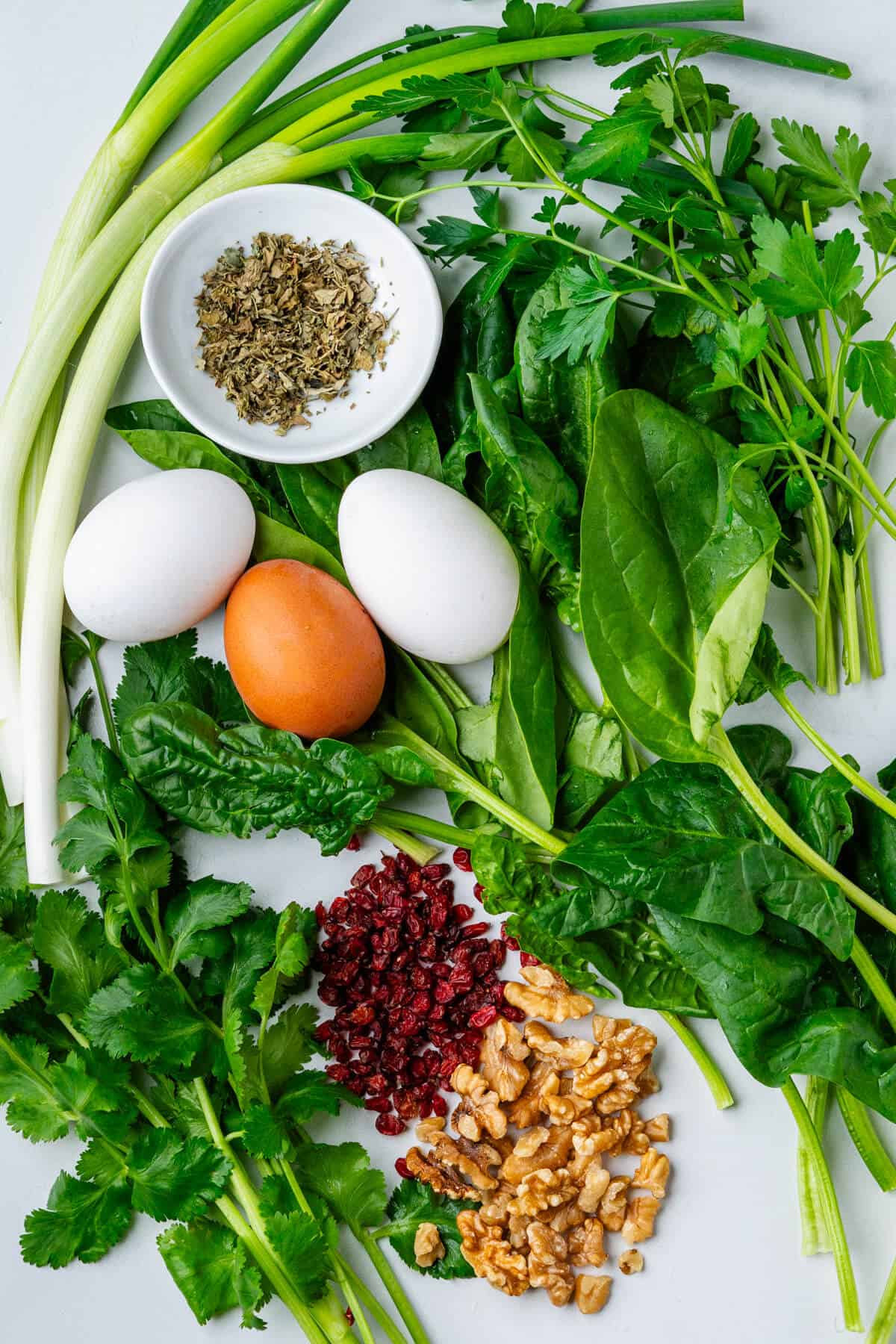
Ingredients and Substitutions
- Fresh green herbs are the core of this dish and in the title 'sabzi'. A combination of parsley, cilantro (coriander) and dill. Fresh herbs bring the signature green color. If you can't get a hold of any of these, substitute with more of the others to get the same total amount. You can also additionally add some dried herbs
- Green onions (scallions) add a mild onion flavor that blends well with the herbs. Chives are also commonly used
- Dried fenugreek is a distinct ingredient known as shambalileh, that enhances the depth of flavor. You can find it at Persian or Indian supermarkets. If unavailable thats ok, you can skip it
- Fresh spinach adds extra greens. Kale or swiss chard can be used as substitutes but I haven’t tried these personally
- Eggs bind everything together without being eggy. Unlike a regular frittata, its not heavy on the eggs
- Walnuts add a slight crunch and richness. Ensure to chop them up finely. I like to toast them for a few minutes too. Almonds are a good substitute
- Barberries are optional but are actually my favorite part. They're tiny dried berries that add a tart sourness. Dried cranberries are probably the closest but are a little sweeter so the flavor will be altered
- Turmeric powder gives a warm, earthy flavor without overpowering, as we only add a small amount
- Baking powder helps make the kuku sabzi become light and airy
- All-purpose flour adds slight structure and to soak up any excess water. Gluten-free flour can also be used
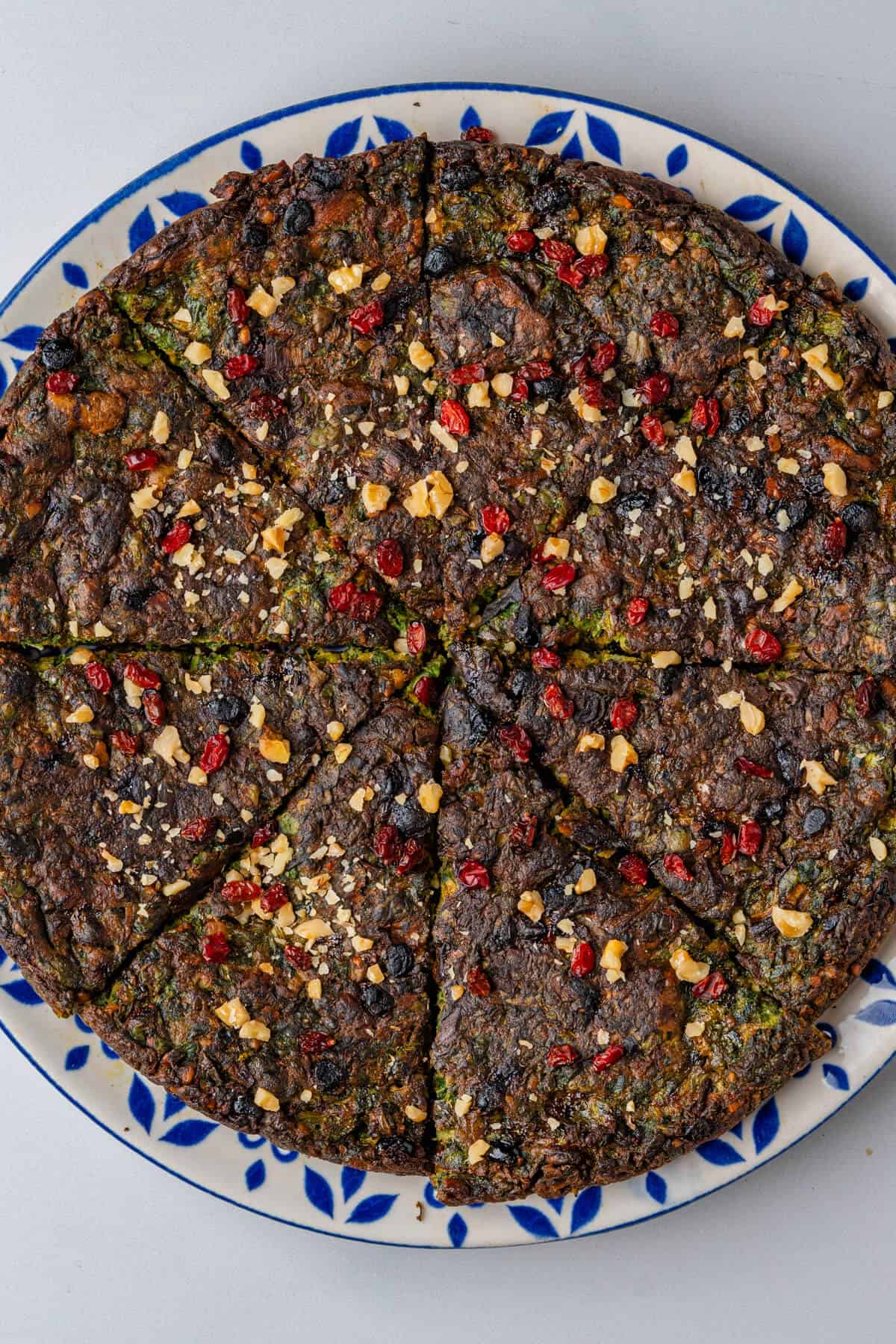
How to make Kuku Sabzi - Persian Herb Frittata
Making Kuku Sabzi is easier than you think! Follow these simple steps to create a flavorful, herb-packed Persian frittata that’s perfect for any occasion (note quantities are listed in the recipe card below)

Wash the herbs and spinach, then dry thoroughly with a salad spinner or kitchen towels
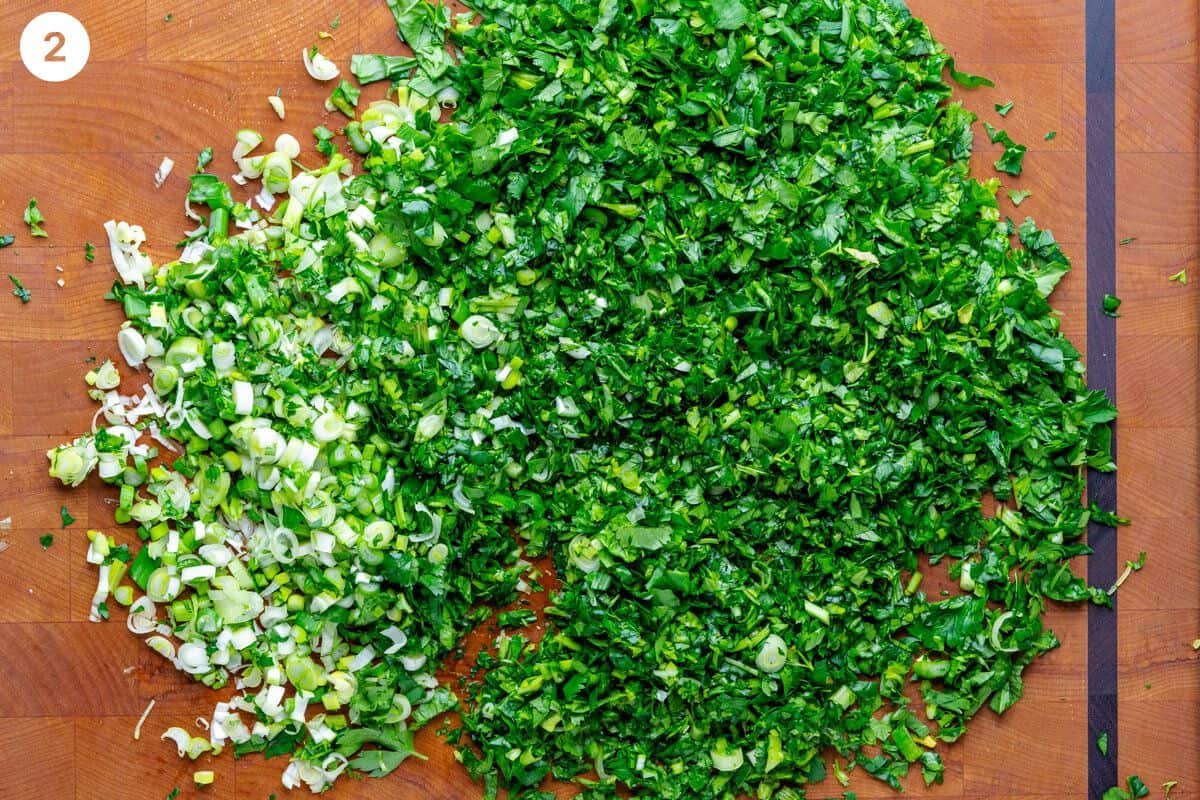
Chop all the herbs and spinach well and finely slice the scallions

Finely chop the walnuts, optionally toasting them in a pan for a few minutes
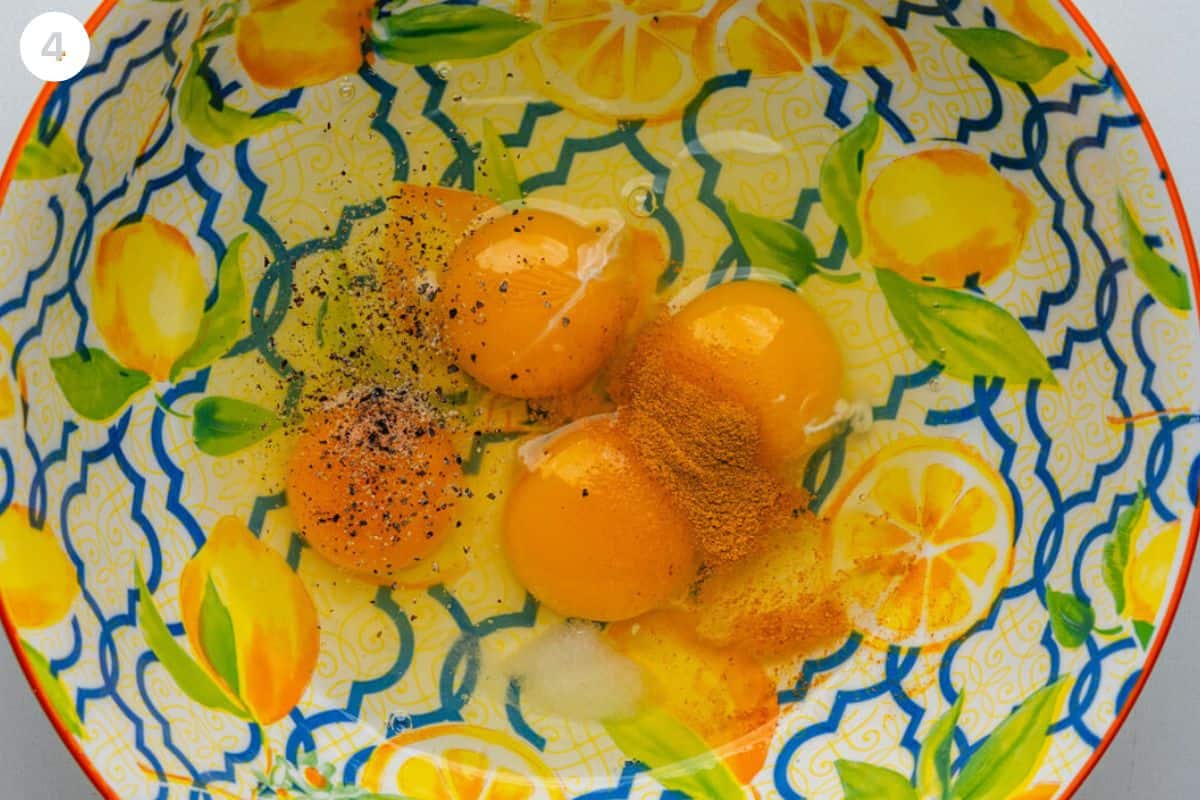
In a large bowl, whisk the eggs, turmeric, baking powder, salt and pepper
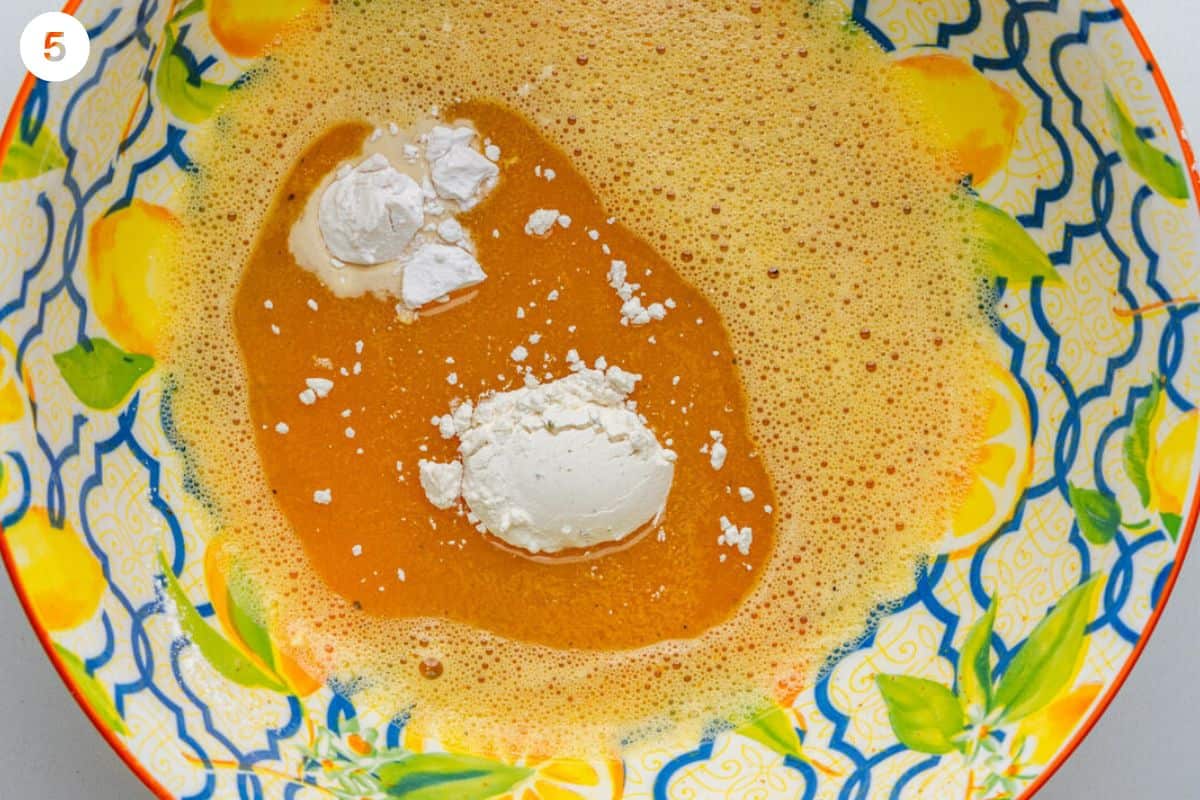
Add in the flour and whisk
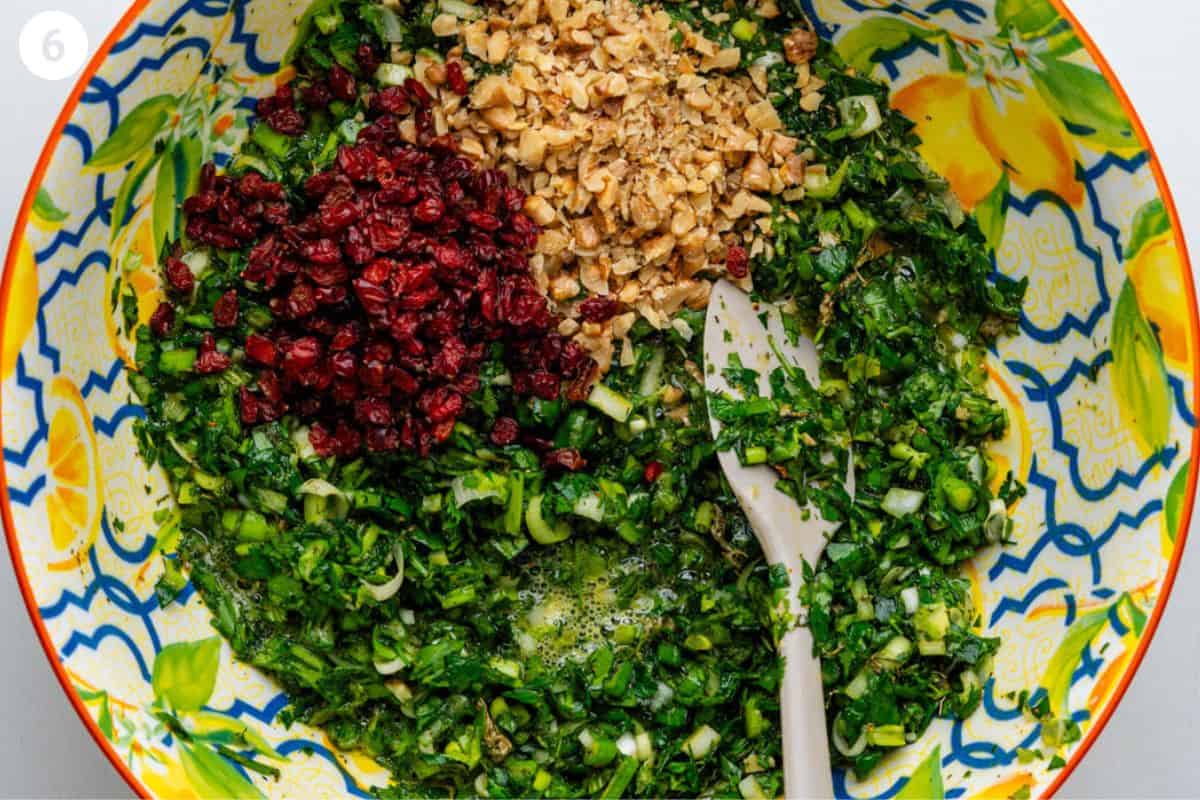
Stir in the chopped greens, fenugreek, walnuts, and barberries, mixing gently to avoid excess moisture
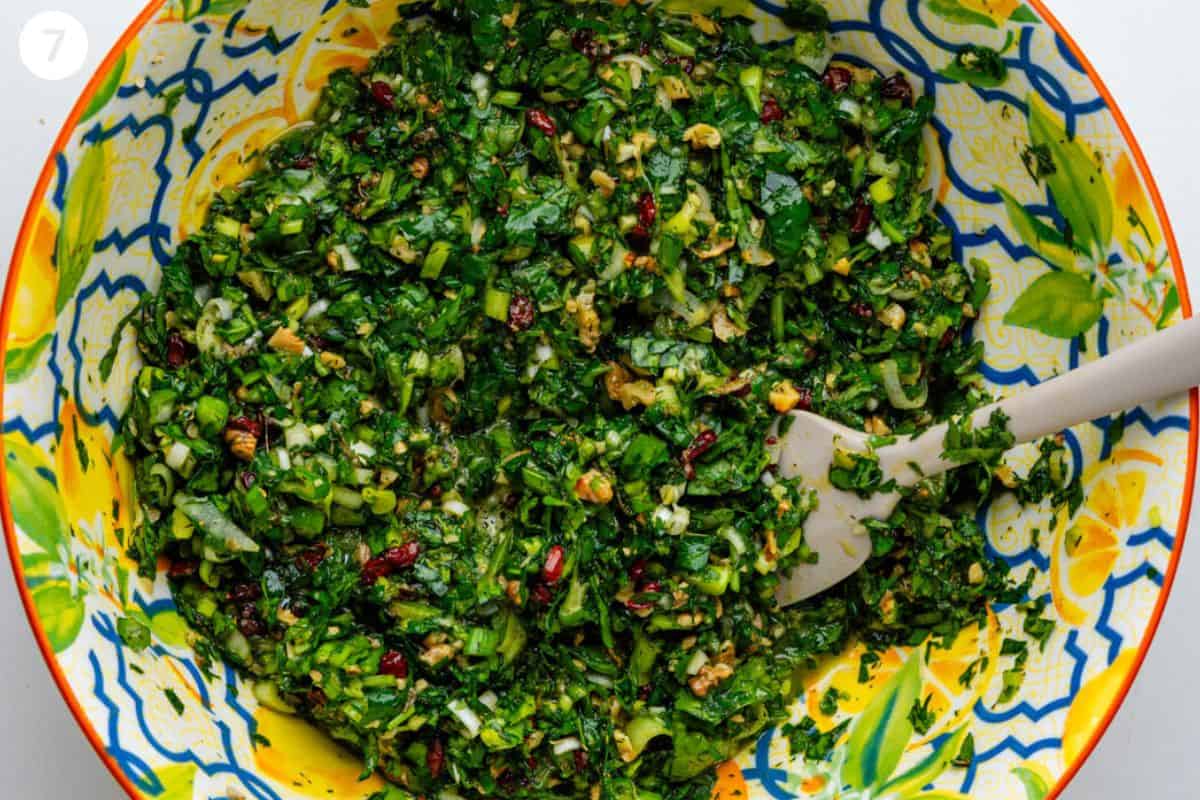
The mixture should be thick. If it's too wet, add a little more flour if needed
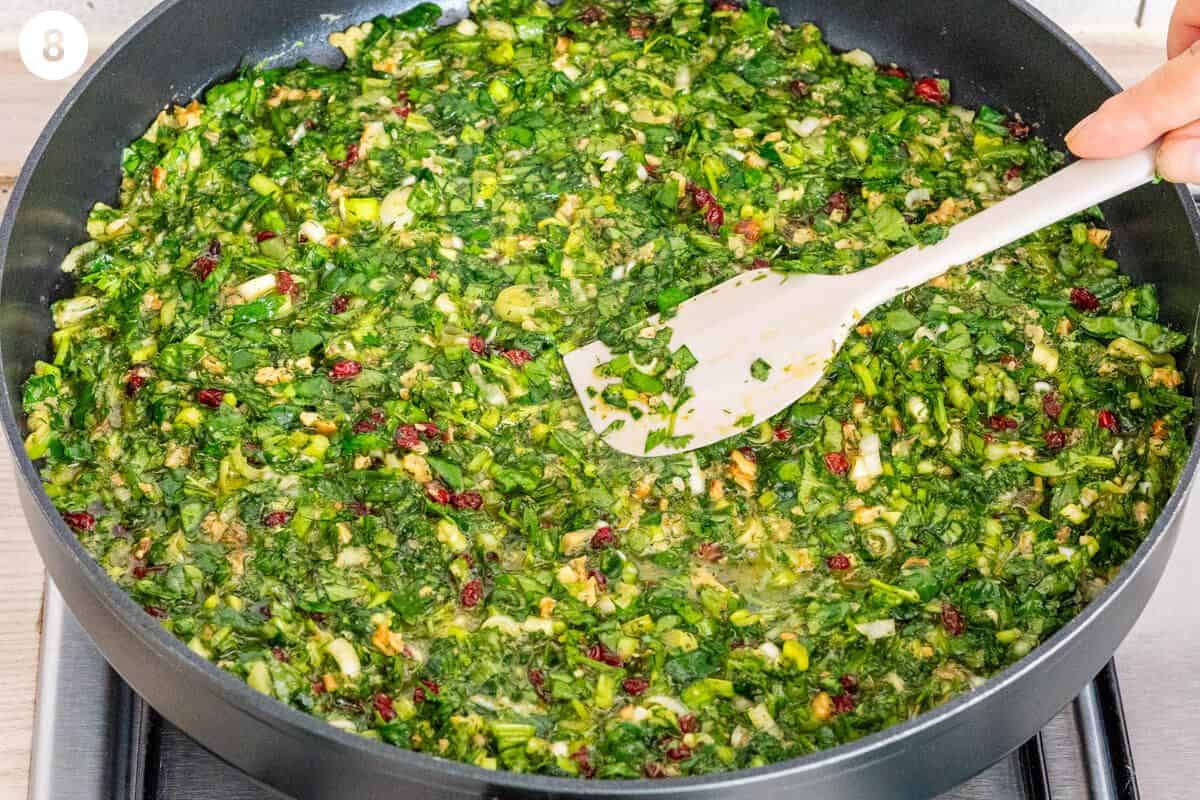
Heat olive oil in a non-stick pan (~9.5 inches / 24 cm) over low-medium heat. Add the batter and flatten the top with a rubber spatula
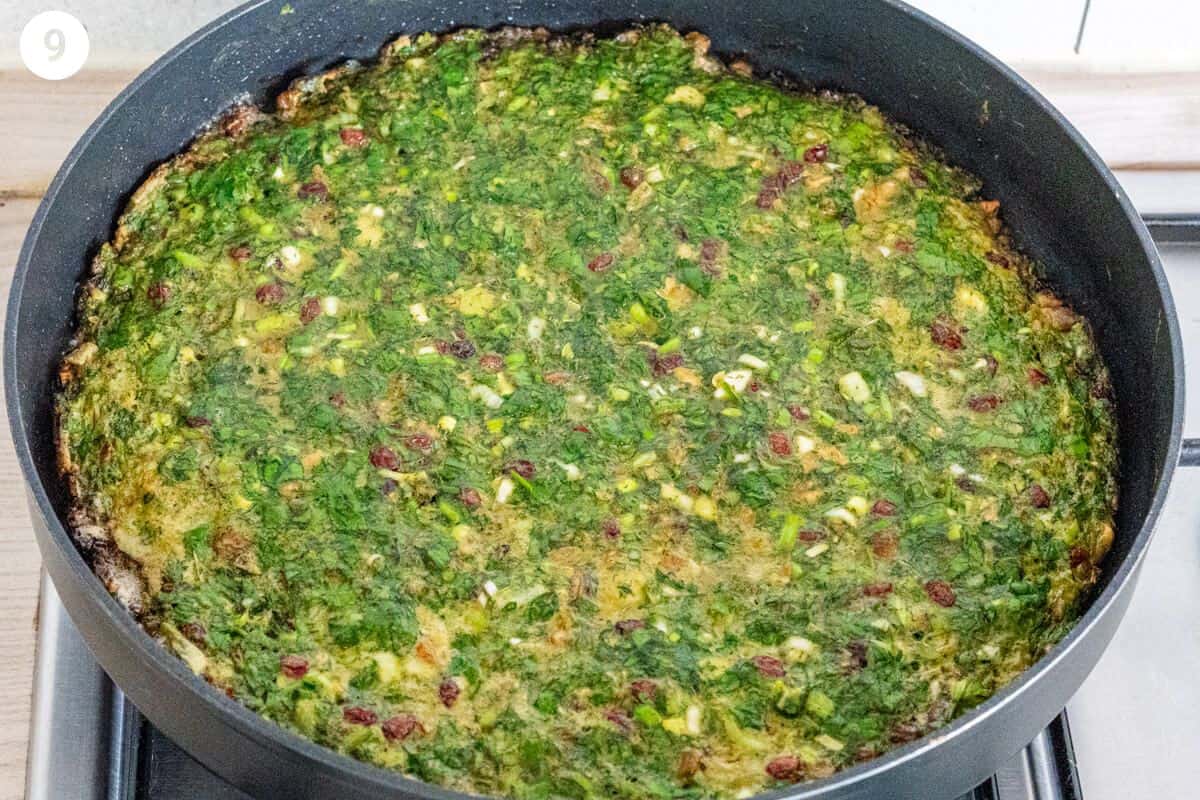
Cook for ~15 minutes until the top and sides set, loosening the edges occasionally with a spatula to prevent sticking
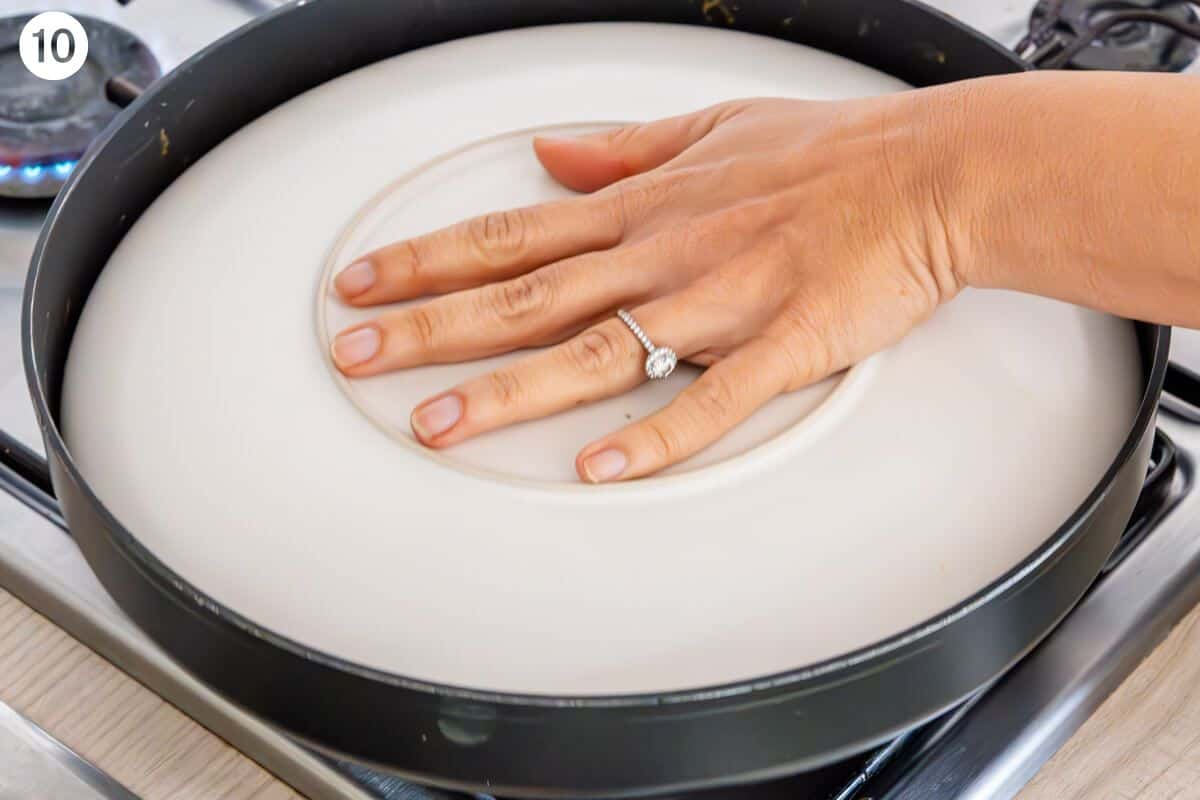
Place a large plate on top of the pan and carefully flip it over. The color should be a dark green, almost black
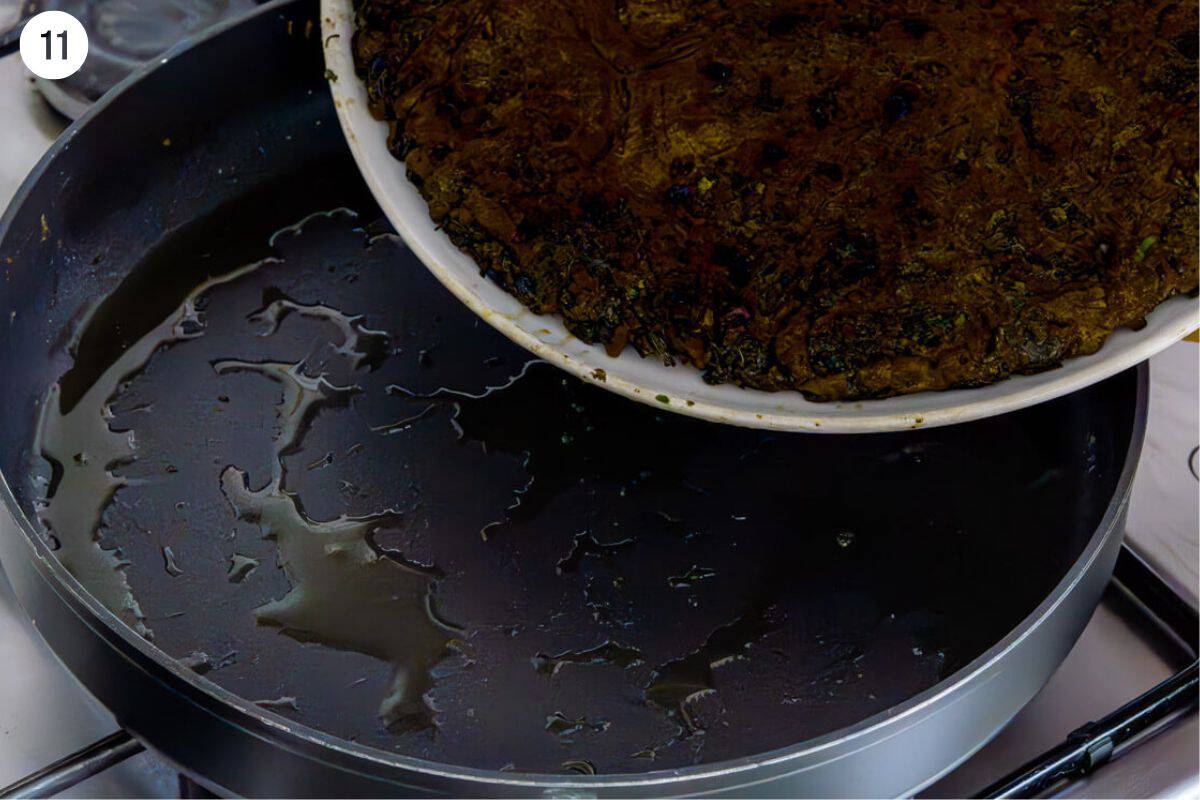
Add a small drizzle of oil to the pan, then slide the frittata back in to cook the second side for ~10 minutes
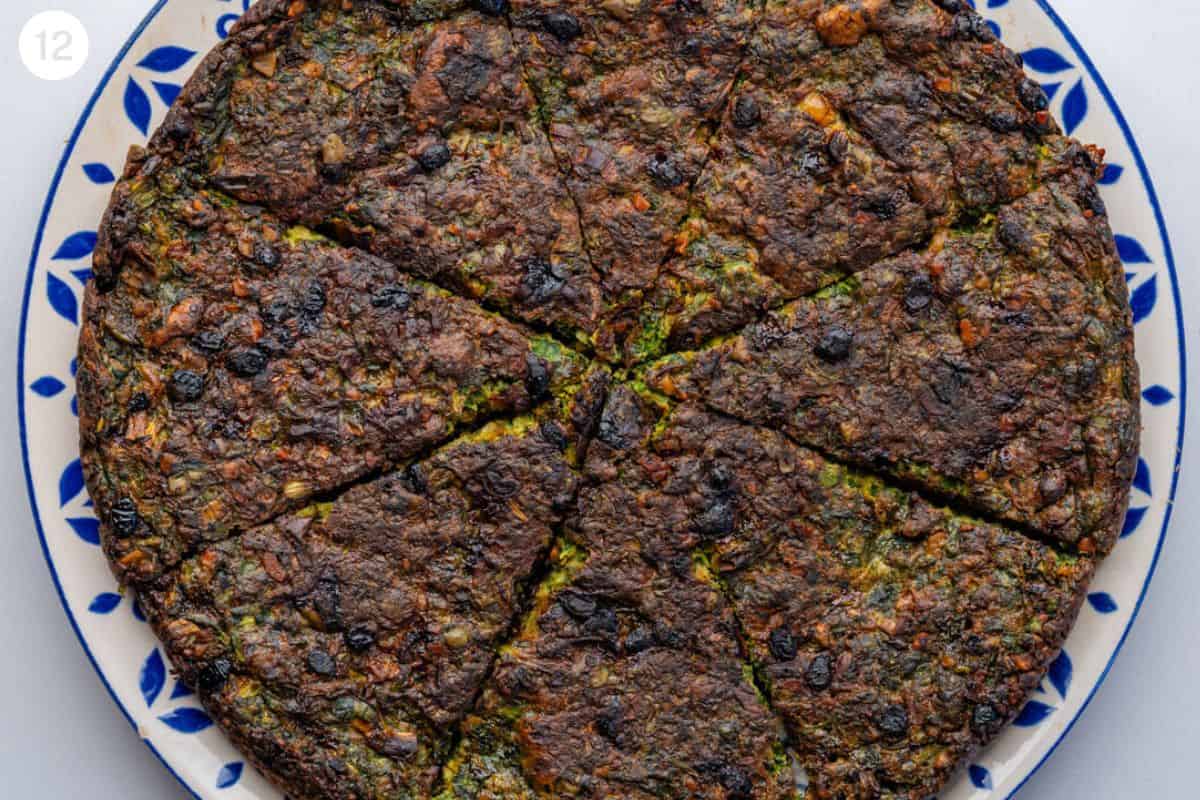
Check a corner to make sure it's browned, then flip it back onto the plate. Allow it to cool for at least 10 minutes before slicing. Enjoy!
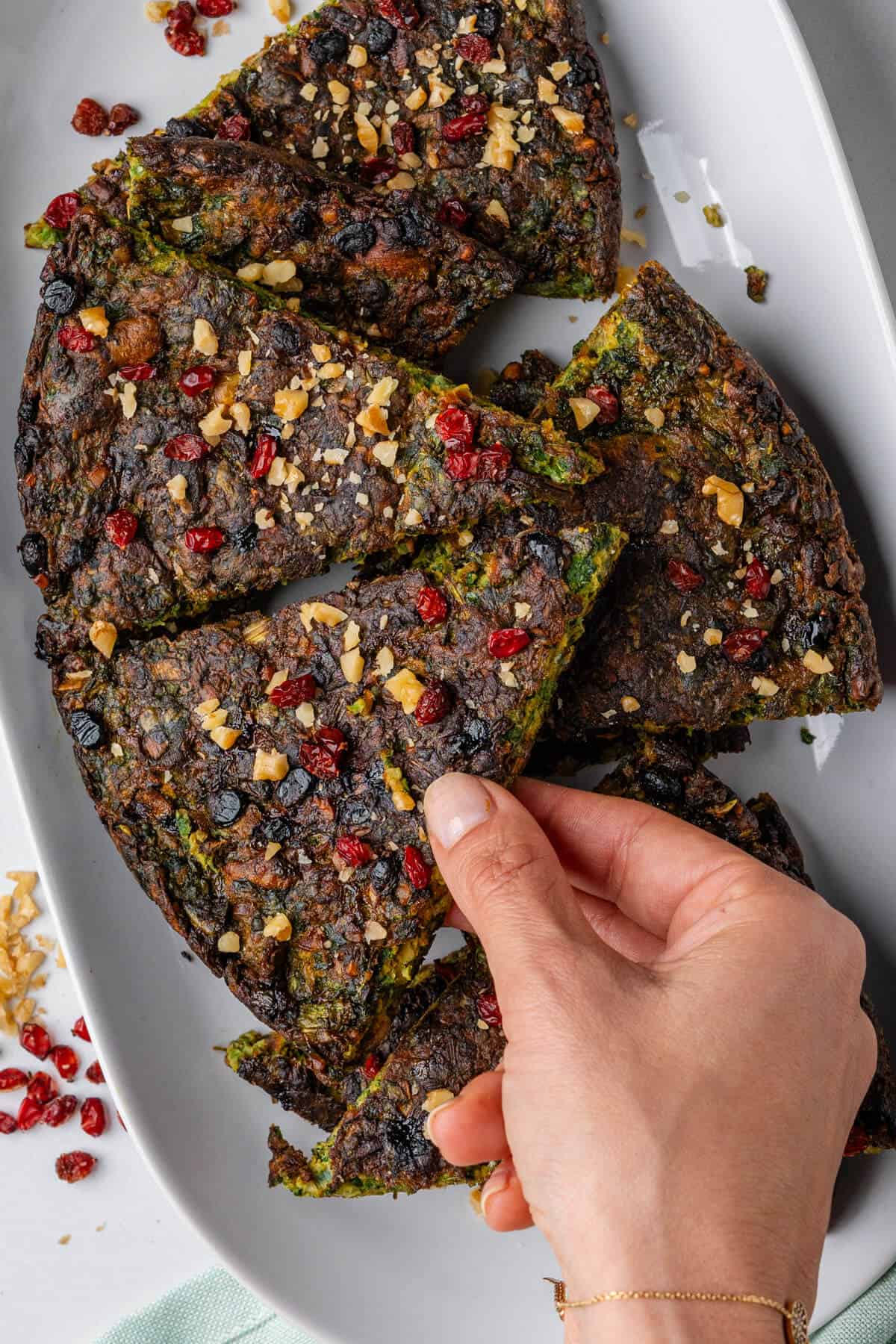
Tips and Tricks
- It's very important to thoroughly dry the herbs once washed using either a salad spinner or kitchen towels. You can prep this the night before and dry further in the fridge
- Chop the herbs well with a sharp knife, technically you can use a food processor but it can make the herbs mushy so I prefer a knife
- Don’t over beat the egg mixture. Once the herbs are added, mix until just combined to keep the texture light
- Use a good amount of oil to coat the whole bottom of the pan so it doesnt burn
- Cook over low to medium heat and keep your eye on it. Once the top and sides have set its time to flip
- Let it rest before slicing which helps set the texture and prevents crumbling
Storage Instructions
- Store leftovers in an airtight container for up to 4 days
- Enjoy cold or reheat in a pan over medium heat or in the oven for a few minutes until heated through
- Freeze pieces once sliced in a freezer bag with parchment paper in between for up to 1 month. Thaw in the fridge or at room temperature

FAQs
Kuku sabzi is a Persian herb frittata served commonly on Nowruz - Persian New Year which is around the 20th of March
Traditionally kuku sabzi is fried in a pan with oil. You can however bake it if you prefer, which will use less oil but you wont achieve the signature dark green color. Bake in an oven dish for approx 30 minutes until cooked through and broil the last few minutes for a dark color on top
It's made with a combination of fresh herbs including parsley, cilantro, dill, spinach, scallions or chives. Dried fenugreek gives a distinct flavor, along with chopped walnuts, barberries and eggs to bind it together
I know it may seem intimidating to flip, but once you see the sides have set, place a plate on top and confidently flip it, just like we do Tahdig. If you prefer not to flip it, ensure your pan is oven safe and place in the oven or broiler once the first side has cooked and set
Traditionally we serve kuku with sabzi polo bah mahi (herb rice with fish). Enjoy standalone or in between Persian pita bread or flatbread such as barbari or sangak
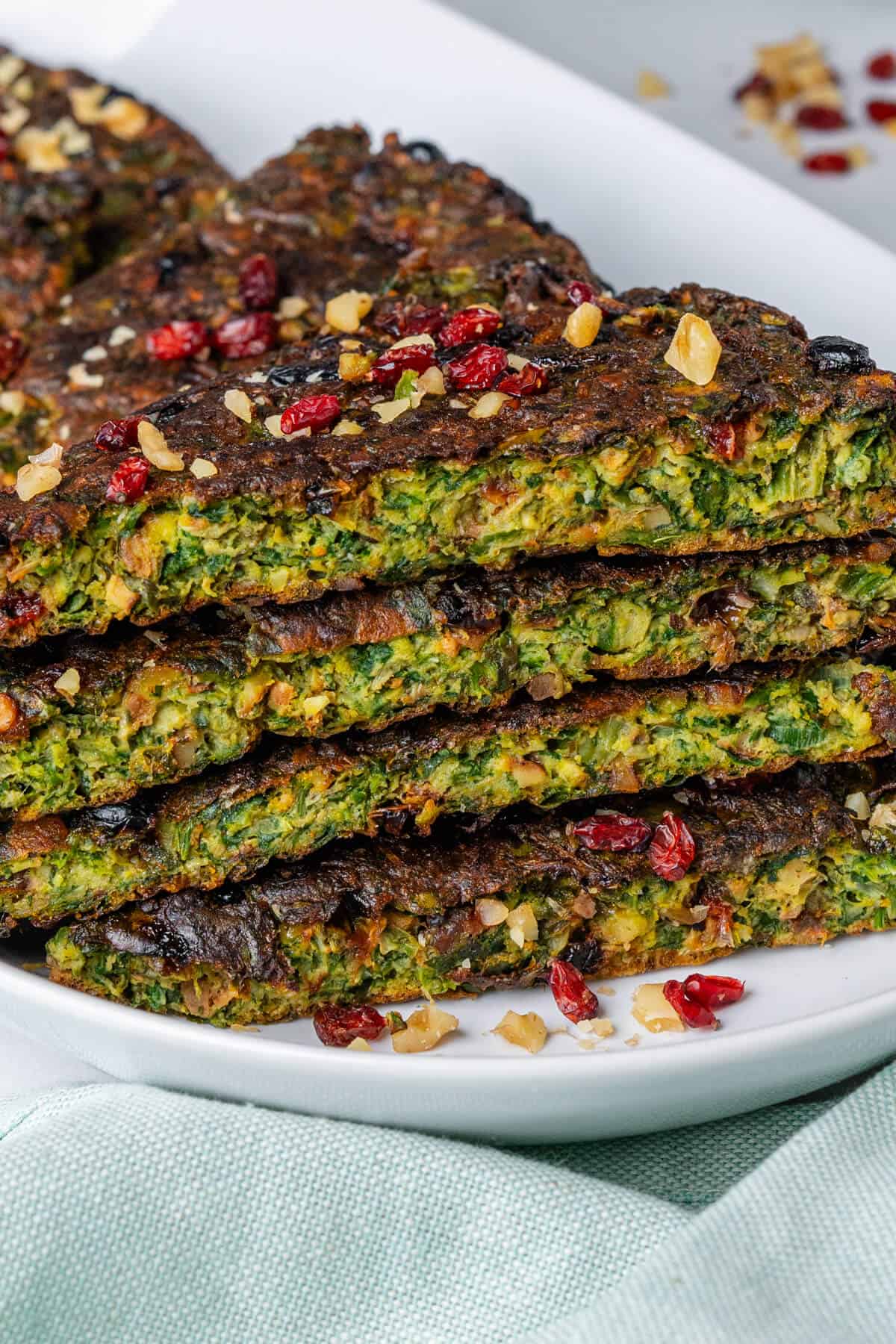
What to Serve for Nowruz - Persian New Year
These are my favorite dishes to serve with Kuku Sabzi:
More Persian Recipes
Looking for other recipes like this? Try these:
I love seeing your creations and remakes, so be sure to rate the recipe, comment and share your photo on Instagram so I can share the love!
Recipe
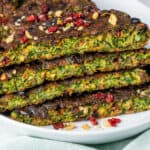
Kuku Sabzi - Persian Herb Frittata (Authentic Family Recipe)
Ingredients
- 4 large eggs
- 1 cup fresh parsley leaves - including tender stems
- 1 cup fresh cilantro / coriander - including tender stems
- 1 cup fresh dill
- 1 cup fresh spinach
- 1 cup scallions / green onions (approx 4)
- ⅓ cup walnuts
- 1 tablespoon dried fenugreek (*optional)
- ¼ cup barberries (*optional)
- 1 tablespoon all purpose flour
- ½ teaspoon turmeric powder
- 1 teaspoon baking powder
- 3 tablespoons extra virgin olive oil
- Salt and black pepper
Instructions
- Wash the fresh herbs and spinach and ensure to dry them well to remove all the water using a salad spinner or kitchen towels (you can also prep this the night before and keep in the fridge to dry out more)
- Chop all the herbs and spinach well and slice the scallions
- Finley chop up the walnuts, you can optionally toast them in a saucepan first for a few minutes
- In a large bowl whisk the eggs
- Add turmeric powder, baking powder, flour, ½ teaspoon salt and good pinch of pepper. Whisk together
- Add the chopped greens, fenugreek, chopped walnuts and barberries and stir the mixture together - don't over beat as it will make it wateryThe mixture should be a thick batter consistency, if too wet you can add a 2nd spoon of flour if needed
- Heat 3 tablespoons of olive oil in a non-stick saucepan over low - medium heat (~ 9.5 inches / 24 cm). Add the batter and quickly flatten the top evenly with a rubber spatula
- Cook for ~ 15 minutes until you see the top and the sides have set. Within this time, ensure to move the sides from time to time with the spatula to ensure it's not sticking
- Place a large plate on top of the pan and carefully flip upside down onto the plate. It should be a very dark green color close to black
- Add a light drizzle of oil to the pan, and slide the kuku back on the pan to cook the second side for about 10 minutes. Check one of the corners to ensure it has browned enough and flip back onto the plate
- Allow it to cool for at least 10 minutes before slicing. Then slice into squares or triangles. Garnish with chopped walnuts and barberries and serve up your delicious Persian Kuku Sabzi and enjoy!
Notes
- Herbs – thoroughly dry after washing using a salad spinner or kitchen towels. For extra dryness, prep the night before and store in the fridge
- Eggs – don’t over beat. Once the herbs are added, mix until just combined to keep the texture light
- Fenugreek & Barberries – optional additions for extra flavor. Fenugreek adds depth, while barberries bring a tart contrast
- Flipping – once the sides have set, place a plate on top and flip. If you prefer not to flip, use an oven-safe pan and finish in the oven or broiler


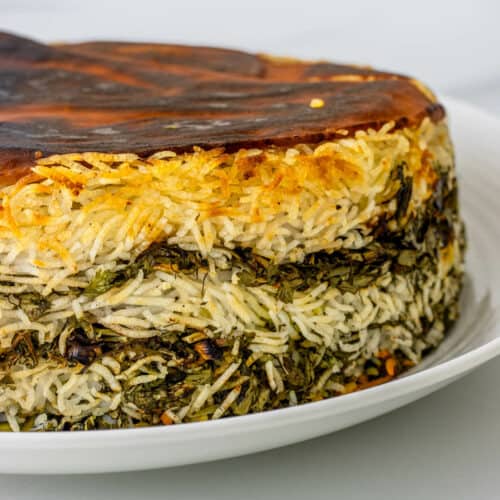
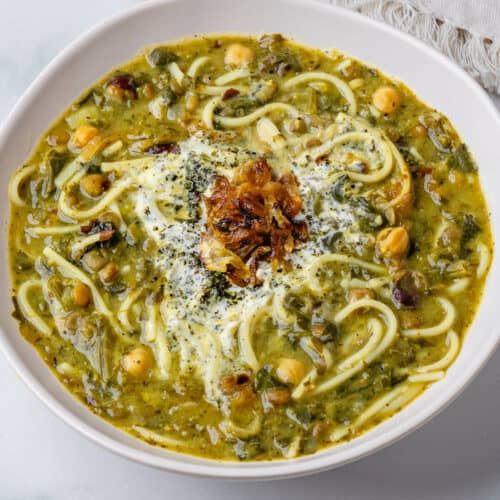
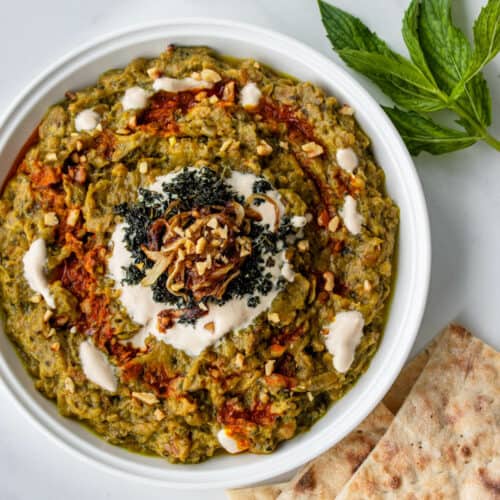
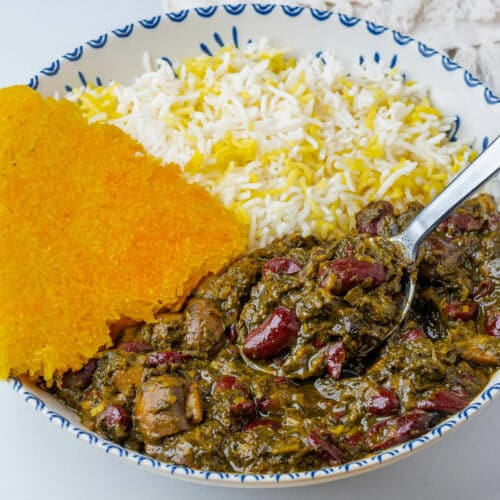
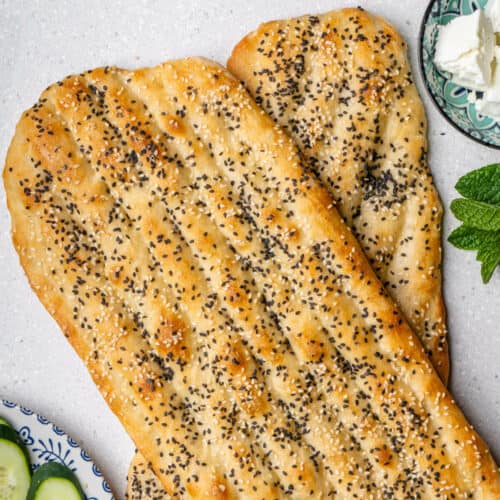
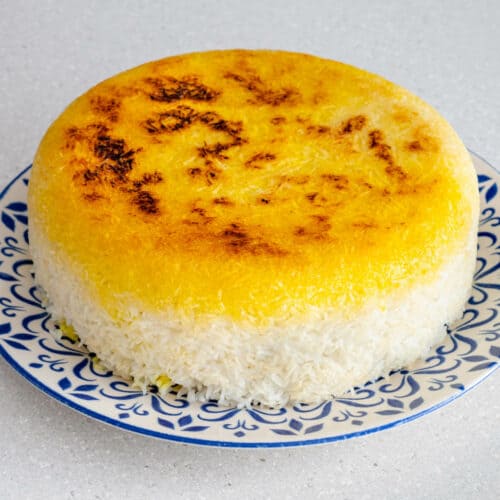
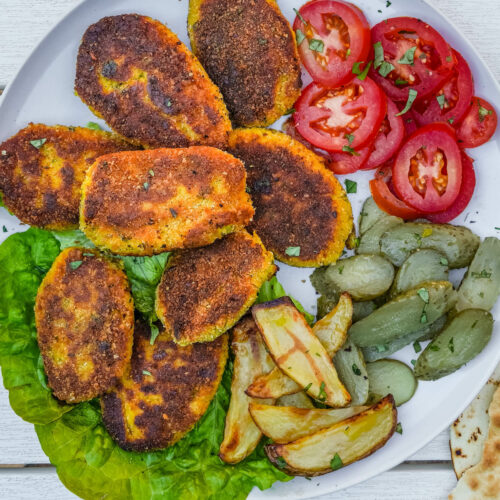
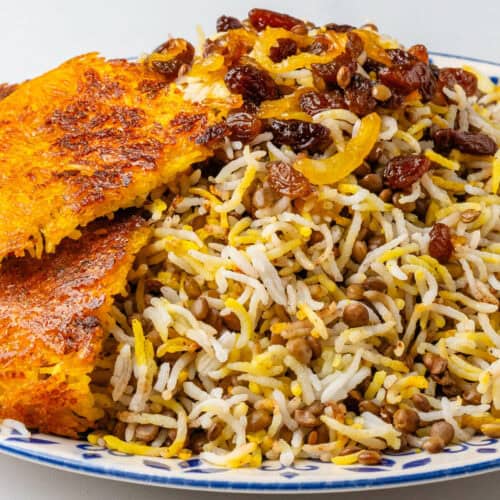
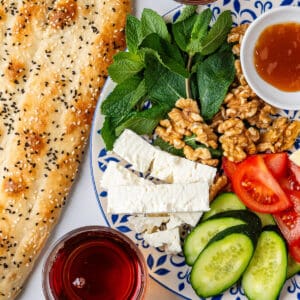
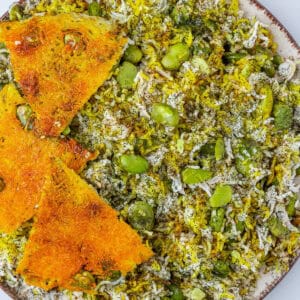
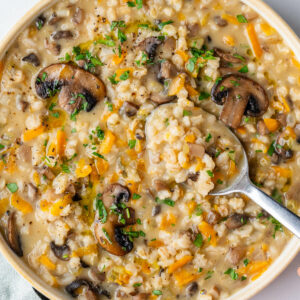
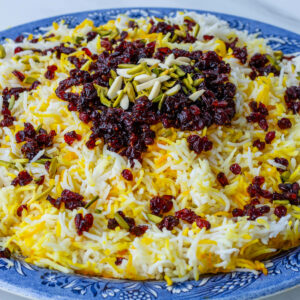
Laura M. says
Really enjoyed this. Used a mix of chard and kale instead of spinach, and chives instead of green onions. I also doubled the recipe. Everything else - as written. Served with yogurt, walnuts, barberries, cherry tomatoes, and pomegranate molasses. The walnuts mixed in with the greens added a nice textural element. I would probably add more the next time around.
I have never had this dish before - will make it again. Thanks for sharing!
Ayeh Manfre says
So lovely to hear this Laura!! Love the addition of chard and kale too 🙂